by Dennis Fenimore
At my high school, the bus home was on the other side of the teachers’ parking lot. There, a white TR4 caught my eye. Foreign cars were a rare sight in Portland, Oregon, and most of them were odd looking Japanese creations. The Triumph didn’t look odd at all, just very small, and the sight of it pierced me to my very center. A few years later while exploring the back streets of Great Falls, Montana, I spied a dark green early Triumph GT6. That same feeling of desire returned.
I had to have one, and within a couple months I did. My saffron 1971 GT6 Mk 3 had an electric overdrive and a speed limiter. The limiter landed in a trash bin almost immediately. What a car it was! It looked great, smelled exotic, and driving it was a delight made all the better by living in a sparsely populated state where any destination within 100 miles was “local.” That GT6 is how I toured Glacier National Park. I frequently drove through the mountains to Spokane on two-lane freeways covered in snow and ice. The car handled brilliantly, even there.

A string of other such cars followed, including an MG 1100, MGB GT, a Fiat 850 Sport Spider, and a 914. Marriage and family ended the run until the kids were old enough to be on their own.
The next British car I bought was in awful shape, not fit to drive. The purchase was partially a result of a theory I had devised. I was convinced I should either pay the money for a British specimen properly restored or get one to build from scratch. Anything in between might be full of mischief.
On the way home from work one day, I spied only the second Lotus Europa I had ever seen in my town. The first was in 1975 and it took 37 years to see number two. As with the Triumph, I knew I had to have one.
I did a poor job of assessing the condition of the first one I found, but it was within an hour of home and available. I told the seller that if he could get it to my house, he could have my money.
Truly, it was only half British, on account of a French drive train, and it turned out to be the most dilapidated vehicle I ever bought. Driving is the reason I own sports cars, but this one taught me what it is to have a project and that a project is not such a bad thing. The motor ran well and it shifted, but everything needed attention.
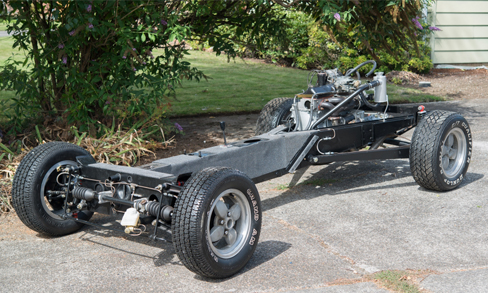
I took the body off and stripped down the chassis, then methodically renewed the chassis, suspension, brakes, and exhaust. This required hard work, lots of new parts, and welding.
The truth? Very satisfying. Parts were easily found and it’s a simple machine.
All through the chassis revitalization I was both enjoying the process and beating myself up over diverting time away from creating art, which was supposed to be my primary concern. To me, that chassis became a work of art. Plumbing the new brake pipe that I flared and bent myself also satisfied my creative side. I think I might redo the seat frames though because my approach made them heavy. That’s contrary to a marquee whose brilliant founder lived the “simplify, then add lightness”
design philosophy.
While my car was in pieces, I adopted a second very nice-looking Europa that I believed was totally updated and, as the seller stated, “needed nothing.” The vision was to drive one while plodding along on renewing the other one. That’s right, you can laugh with me.
So much was wrong with the second car mechanically and electrically that it vexed me for years before things stabilized. I comforted myself saying there were only so many parts to fail and only so many maintenance items a previous owner could have gotten wrong, and I would win if I just stayed at it. That was true.
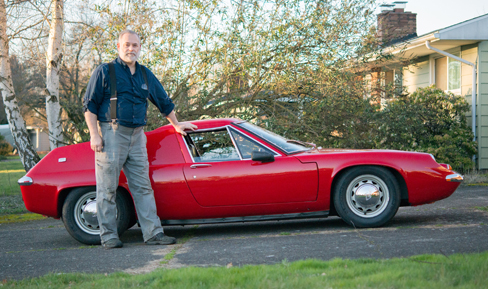
Europa owners sometimes refer to their machines by their exceedingly short VIN, and my first car is 952R. The second I named Red Pea for the color it was painted, and for the pea in the Hans Christian Anderson tale where such a thing was used in detecting royalty. If you can stay with your challenged old car until it’s right, and retain a sunny disposition, then you may have attributes of storybook royalty.
I often quipped that Red Pea got newer every month. That car taught me how to diagnose and service just about every mechanical component. My garage is my Europa University.
Owning two antique Lotus cars: 952R (obvious derelict) and Red Pea (closet derelict) have been a choice experience, taken in the aggregate. Reclaiming them with the help of a worldwide community of Lotus enthusiasts has given me a solid appreciation for Lotus as a Marque. These are fabulous machines!
Comparison to the Mazda MX5 in terms of the handling characteristics proved accurate. Unlike the Miata though, Red Pea is a time machine. It left the factory in September 1969 and took up residence in Canada where life was tough for such a car. It did a lot of waiting around before getting returned to the road. I’ve taken it no more than a couple hundred miles at a time, and I marvel at how it so perfectly takes me back to those youthful days behind the wheel of my first GT6.
Modern vehicles are probably better in every practical way. They’re less fragile, quieter, and they’re less fiddly. But the Europa has them beat with the intangibles, which matter infinitely more than cupholders. It’s an utter a blast to drive with an ambiance that sets it apart, and it honestly makes the world a better place.
One day a small group was standing not far from Red Pea when I approached and got in. As I closed the door, the group applauded enthusiastically.
Invariably, thumbs up accompany each drive from people glad to see one of these in
the flesh.
I have heard that the body design is off-putting to some people, but how is this possible? When you see one in person, you realize that the bread van analogy is old, tired, and wrong. This is a pretty car.
Since Red Pea’s problems have abated, I’ve finally gotten back to making paintings rather than repairs. My little mid-engine beast is finally showing up on canvas.
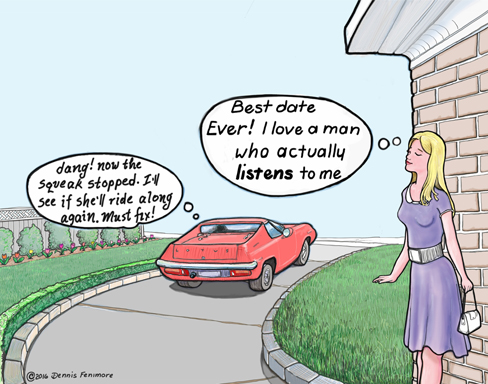
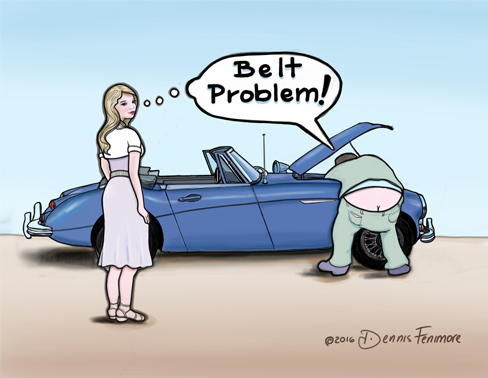
Of all the cars you might venture to restore, if you enjoy projects, then you should consider the glorious Lotus Europa. Many of the parts you might need are available wherever Spitfire and GT6 and MG bits are sold, and the owners’ groups are very good for support. The price of admission is within reach, and you will end up with a car that just might put a well-deserved smile across your face repeatedly.
If on the other hand you are more interested in just enjoying the drives, avoid project Europas and buy a well sorted example after having it professionally checked out. The price you actually pay for a truly nice one will be reasonable, even at top dollar. It will get good gas mileage and upkeep is possible for the home mechanic. If I wanted brakes, spindles, wheel bearings and such, I have them on hand from Moss. Highly recommended. MM




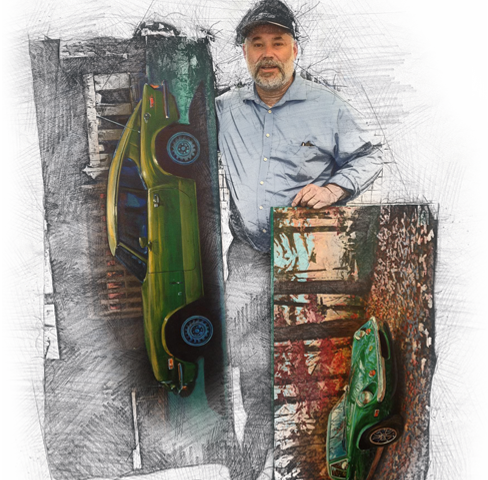
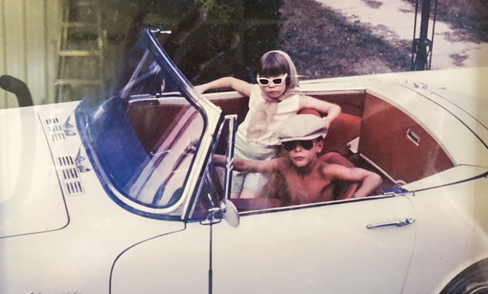
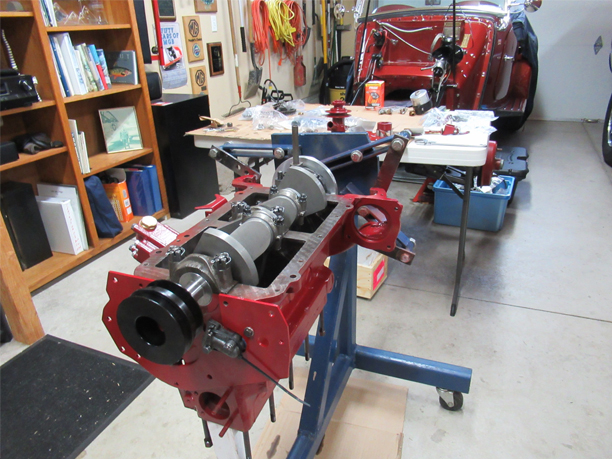

'Drawing Inspiration' have 2 comments
January 10, 2022 @ 11:35 pm Larissa Crandall
Good Job, and thanks for sharing this with me.
January 13, 2022 @ 3:03 am Tony Wattwood
This article truly captures my lifelong love of sports cars. Like the author, I was from a rural town and was smitten with the first sports car I had close contact with (1967 MGB GT with overdrive). I subsequently bought that car, drove it through high school and college. Now at 65 I look back on the love affair with my cars quite affectionately and with a lot of satisfaction. I’ve been blessed to have owned many including MG Midgets, an Austin Healey Bugeye Sprite, (since 1974, still own today), Lotus Elan (since 1980, still own today), a Datsun 2000 Roadster, 911 SC, Lotus Elise, Cayman, multiple 60s Chevy pickups (not sporty!) and and several Twincam Europas. My latest and maybe lastest is a 1969 Lotus Europa S2 similar to the one in the article. It just came out of paintwork yesterday after a years long nut and bolt restoration by me. The trials and tribulations have been many, but I’ve enjoyed them all. Well, maybe not at the exact moment they occurred, but eventually….. The thing I like to say about the old sports cars is that “they need me”. Where as for the late model Cayman, I was more of just a “participant” because it was so good on its own. You have to work in close concert with the older cars to get the best out of them. There is something about the rhythm, sounds, smells, wind, etc that just work for me. I feel re-engergized after those drives. Kudos to the author!